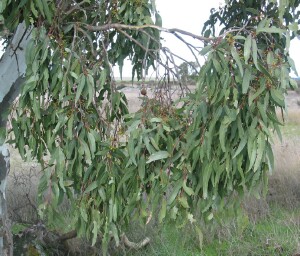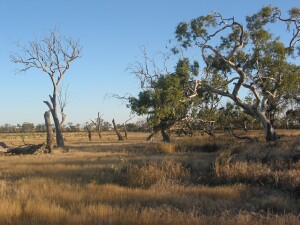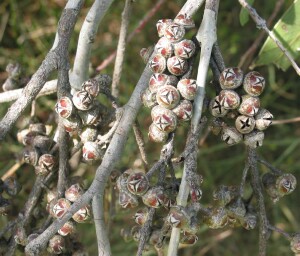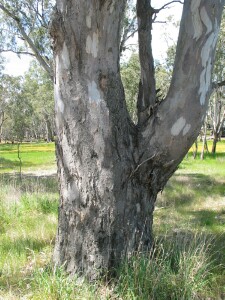River Red-Gum
Back | Salinity Indicator Plants Home | Common name home | Scientific name home | Photo Gallery | Glossary
| River Red-Gum photos |
| Scientific Name: | Eucalyptus camaldulensis | 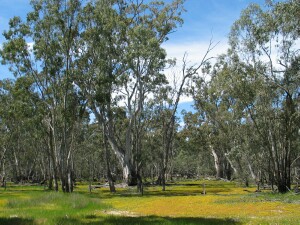 River Red-gum - normal form tree Photo: A J Brown 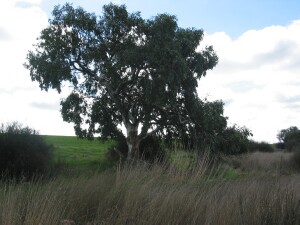 River Red-gum - dwarf form tree Photo: A J Brown | |||||
Other Common Names: | Murray Red Gum, Red Gum, River Gum | ||||||
| Status: | Widespread native across all mainland Australia. | ||||||
| Plant Description: | Medium to tall tree to 40 m high, with a large spreading crown. Bark is smooth, mottled white, yellow and grey and shedding at intervals throughout the year. Rough at the base of the treee. Leaves alternate, broadly lanceolate, to 11 cm long and 3 cm wide, dull green, with numerous clear, yellow and green oil glands. Flowers white, borne in clusters of 7, each cluster at the end of a slender common stalk 2 cm long. Buds to 1 cm long, 0.5 cm wide, the cap hemispherical and beaked. Fruit hemispherical, to 0.6 cm long and 1 cm wide, on a very short stalk, the valves exserted. Flowering summer. | ||||||
Habitat: | Widespread along rivers and flood-plains across Australia. It also occurs on heavy clay soils of the Volcanic plains and on the edges of salt lakes and swamps. River Red-gum is considered to have moderate tolerance to salinity.
| ||||||
| Comments: | This species displays considerable variation in morphology across its range. It also varies widely in its salinity and waterlogging tolerance and selection of appropriate clones is important when used for rehabilitation. Aboriginals used River Red-gum bark for canoe and shield making. In more recent times, the wood has been highly prized for heavy construction, railway sleepers, fencing, wood turning, firewood and charcoal production. It is also an important source of honey. | ||||||
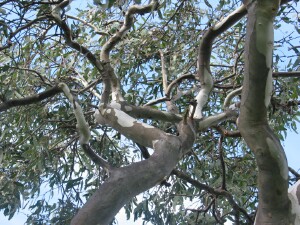 River Red-gum - bark Photo: A J Brown | 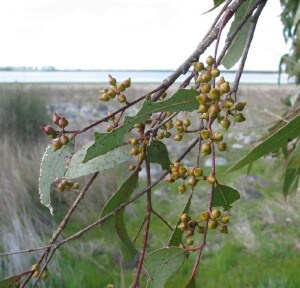 River Red-gum - buds Photo: A J Brown |
|
|
|
|
- CSIRO - Technical Publication - River red-gum (external link)
- CSIRO Publishing - Australian Journal of Experimental Agriculture - Survival and growth of the tree species and provenances in response to salinity on a discharge site (external link). This paper examines salt tolerance of a range of tree species, including River Red-gum and Eumong
- CSIRO Publishing - The Response of six Eucalyptus Species and Casuarina obesa to the Combined Effect of Salinity and Waterlogging (external link). To view the information PDF requires the use of a PDF reader. This can be installed for free from the Adobe website (external link).


